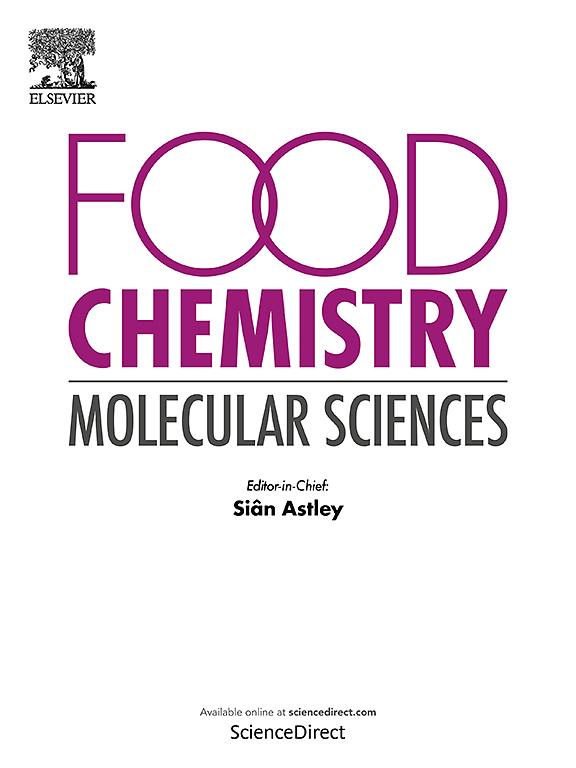Deciphering the complex molecular architecture of the genetically modified soybean FG72 through paired-end whole genome sequencing
IF 4.1
Q2 FOOD SCIENCE & TECHNOLOGY
引用次数: 0
Abstract
The clear molecular characterization of genetically modified (GM) plants and animals is a prerequisite for obtaining regulatory approval and safety certification for commercial cultivation. This characterization includes the identification of the transferred DNA (T-DNA) insertion site, its flanking sequences, the copy number of inserted genes, and the detection of any unintended genomic alterations accompanying the transformation process. In this study, we performed a comprehensive molecular characterization of the well-known GM soybean event FG72 using paired-end whole-genome sequencing (PE-WGS). We examined the T-DNA insertion site, flanking sequences, the entire structure and copy number of the T-DNA integration, the presence of plasmid backbone sequences, and genome-wide structural variations (SVs). Our analysis revealed that the T-DNA integrated into two distinct sites on chromosome 15 of the host genome, accompanied by a translocation of host genomic sequences. One site harbored a partial T-DNA integration, while the other site contained two tandem repeats of the full T-DNA. Importantly, no plasmid backbone sequences were detected in the host genome, indicating a clean T-DNA integration during the biolistic transformation process. Furthermore, we identified numerous genome-wide SVs, with chromosome 15 ranking second among all 20 chromosomes in terms of SV frequency, and most of these variations occurring within gene-coding regions. These results provide a refined and comprehensive molecular characterization of the FG72 soybean event, which could further support its commercial approval and cultivation. Our work highlights the utility of the PE-WGS approach as a sensitive and labor-efficient alternative to conventional molecular characterization techniques, generating comprehensive data to facilitate the safety assessment of GM crops during research and commercialization pipelines.
通过对端全基因组测序破译转基因大豆FG72的复杂分子结构。
明确转基因动植物的分子特征是获得监管部门批准和商业种植安全认证的先决条件。这种鉴定包括转移DNA (T-DNA)插入位点的鉴定,其侧翼序列,插入基因的拷贝数,以及检测任何伴随转化过程的意外基因组改变。在这项研究中,我们使用对端全基因组测序(PE-WGS)对著名的转基因大豆事件FG72进行了全面的分子表征。我们检测了T-DNA插入位点、侧翼序列、T-DNA整合的整个结构和拷贝数、质粒骨干序列的存在以及全基因组结构变异(SVs)。我们的分析显示,T-DNA整合到宿主基因组第15号染色体上的两个不同位置,伴随着宿主基因组序列的易位。一个位点包含部分T-DNA整合,而另一个位点包含完整T-DNA的两个串联重复序列。重要的是,在宿主基因组中没有检测到质粒骨干序列,这表明在生物转化过程中T-DNA整合是干净的。此外,我们发现了许多全基因组的SV,第15号染色体在所有20条染色体中SV频率排名第二,并且大多数变异发生在基因编码区域。这些结果提供了FG72大豆事件的精细和全面的分子表征,可以进一步支持其商业批准和种植。我们的工作强调了PE-WGS方法作为传统分子表征技术的一种敏感和劳动效率高的替代方法的实用性,它可以生成全面的数据,从而促进转基因作物在研究和商业化过程中的安全性评估。
本文章由计算机程序翻译,如有差异,请以英文原文为准。
求助全文
约1分钟内获得全文
求助全文
来源期刊

Food Chemistry Molecular Sciences
Agricultural and Biological Sciences-Food Science
CiteScore
6.00
自引率
0.00%
发文量
83
审稿时长
82 days
期刊介绍:
Food Chemistry: Molecular Sciences is one of three companion journals to the highly respected Food Chemistry.
Food Chemistry: Molecular Sciences is an open access journal publishing research advancing the theory and practice of molecular sciences of foods.
The types of articles considered are original research articles, analytical methods, comprehensive reviews and commentaries.
Topics include:
Molecular sciences relating to major and minor components of food (nutrients and bioactives) and their physiological, sensory, flavour, and microbiological aspects; data must be sufficient to demonstrate relevance to foods and as consumed by humans
Changes in molecular composition or structure in foods occurring or induced during growth, distribution and processing (industrial or domestic) or as a result of human metabolism
Quality, safety, authenticity and traceability of foods and packaging materials
Valorisation of food waste arising from processing and exploitation of by-products
Molecular sciences of additives, contaminants including agro-chemicals, together with their metabolism, food fate and benefit: risk to human health
Novel analytical and computational (bioinformatics) methods related to foods as consumed, nutrients and bioactives, sensory, metabolic fate, and origins of foods. Articles must be concerned with new or novel methods or novel uses and must be applied to real-world samples to demonstrate robustness. Those dealing with significant improvements to existing methods or foods and commodities from different regions, and re-use of existing data will be considered, provided authors can establish sufficient originality.
 求助内容:
求助内容: 应助结果提醒方式:
应助结果提醒方式:


